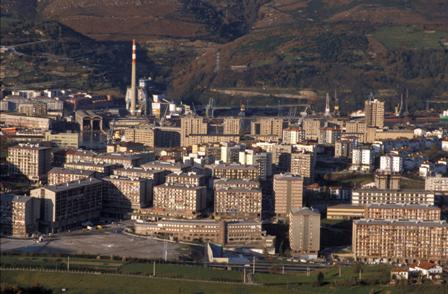The architect Enrique Ponte asserts in his PhD thesis entitled La construcción de la ciudad: Gipuzkoa 1940-1976 (The Building of the Town/City: Gipuzkoa 1940-1976) that the urban development in the Gipuzkoa following the Spanish Civil War (1936-39)was closely linked to the political moment at that time, but with a certain continuity with the avant-garde postulates predating the Civil War. According to Ponte, several Gipuzkoan architects (including Muguruza, and Bidagor, in particular), who after 1942 drove forward the drawing up of the province's Development Scheme ("Organic Gipuzkoa") and the setting up of the Development Scheme Commission, were entrusted with establishing the guidelines for urban development across the Spanish State until well into the 1960s.
-

Erasmus Mundus Joint Master Degree in Enviromental Contamination and Toxicology ECT+ programaren hirugarren promozioaren graduazioa
-

Adimen Artifizialeko Graduaren lehen promozioa
-

UPV/EHUk bere Formula Student ibilgailuak aurkeztu ditu Erresuma Batuan
-

Gure babeslerik onena
-

Low cost teknologia berria, droneen arteko talkak saihesteko
Gipuzkoa was a reference in urban development following the Spanish Civil War
According to a thesis of the UPV/EHU-University of the Basque Country, the choice of this province as a town planning model was a determining factor for action elsewhere
- Research
First publication date: 04/02/2015

The post-Spanish Civil War period saw various moments (national self-sufficiency and isolation of the Franco regime; then, normalisation on an international level, entry into the UN, opening of embassies, economic developmentalism, etc.) which exerted a major influence on the urban development model."With the arrival of developmentalism early in the 1960s, there was considerable economic growth and great industrial development across Gipuzkoa which led to the arrival of thousands of workers who naturally needed housing. The result was that owing to the speculative way of resolving the problem, the city grew in an unstructured way devoid of infrastructure, etc."
Ponte's thesis devotes particular attention to the case of Errenteria, a locality in which he was the municipal architect for several years. "It is the most significant example, from a negative perspective, of course, of the type of urban planning at that time. There we have, for example, the suburb of Beraun (even though it has changed a lot, and for the better)," as the author of the thesis pointed out. "Errenteria was an industrial town like so many others in Gipuzkoa (Arrasate-Mondragon, Eibar, etc.) which all of a sudden almost underwent a radical transformation, exponential demographic growth. The reason? The policy of urban development which, as in the case of the Donostia-San Sebastian area, stipulated that the industrial estates and housing for the workers had to be built on the outskirts of the city (Usurbil, Hernani, Errenteria, etc.)", stressed Ponte.
Muguruza and Bidagor
Among the promoters of Gipuzkoan urban planning at the time stand out two architects from this province, Pedro Muguruza and Pedro Bidagor, who held high positions in the urban reconstruction bodies set up once the Spanish Civil War was over. "It was Bidagor who established the guidelines of urban development across Spain until well into the 1960s. The choice of Gipuzkoa was crucial and was used as a model for other projects elsewhere," asserted Ponte. "At that time the guidelines linked to the concept of 'Functional Town' as opposed to the so-called 'Expansion' (Ensanche) model were followed. They were very different concepts."
The thesis ends with the emergence of a new generation of professionals and a new process: the restoration of the town/city. "There was considerable citizen discontent caused by the destructuring in the previous period (1960-1975), a discontent that was expressed through various social movements and was accompanied by a new generation of architects who tackled the city/town issue from a different approach", recalled Enrique Ponte. "In my thesis I have always defended the position that urban planning is closely linked to the political situation. A city/town at the time of Francoist national self-sufficiency is not the same as in a period of developmentalism, or in the new period that began in 1975. There is a close relationship between the way of understanding the town/city and each historical process, according to the dominant ideology at each moment", ended the author.
Additional information
Enrique Ponte-Ordoqui (Donostia-San Sebastian, 1944) studied at the Faculty of Architecture in Barcelona. He was municipal architect (1985) and head of the Technical Office of the PGOU (Land Use Planning) of Errenteria (1999-2010), as well as director of Transport Infrastructure (1995-1999) and Head of Urban Planning (1992-1995) of the Government of the Basque Autonomous Community (region). He has many papers published in specialised journals, has given courses and has been the editor of several publications. In 1993, he received the COAVN (Professional Association of Basque Architects) Award for Architecture, in the category of urban planning.


